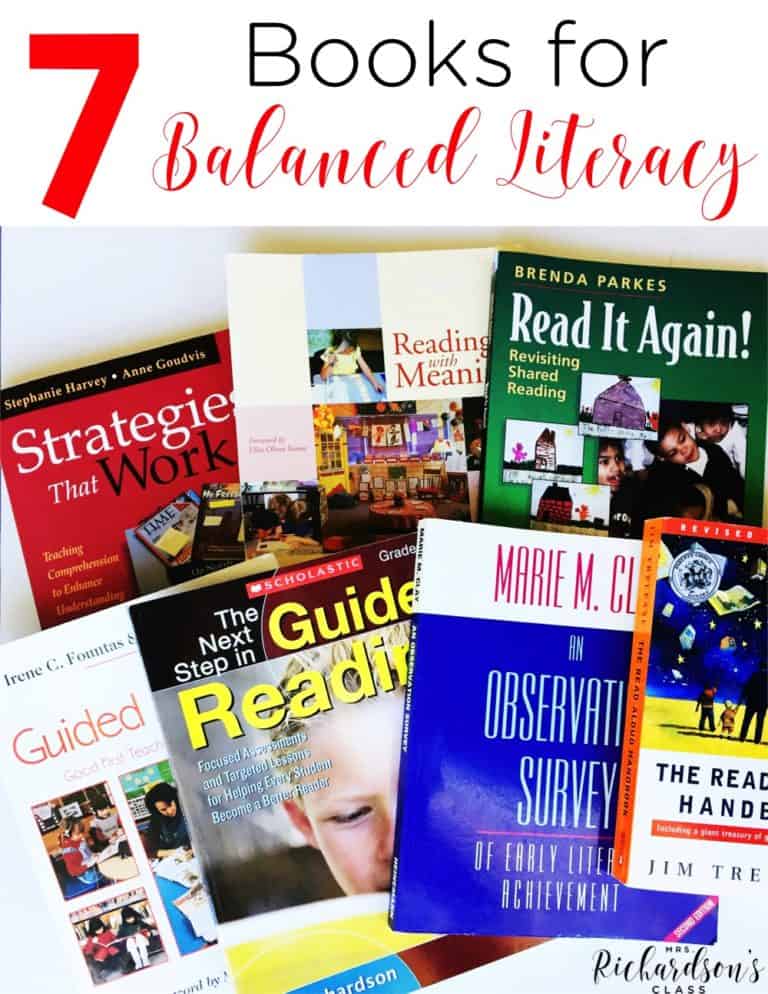


When it comes to analyzing running records, circling in the MSV section shows you what’s going on when a student is reading. Once you determine the information a student is using to solve an unknown word, what do you do when you notice that the student is only using syntax or visual cues, but ignoring meaning?
As we are teaching kids to read, there are many things to consider. We always begin with a strong foundation of phonics instruction. Part of this is making sure they have text in front of them to practice whatever phonics skills we have introduced. We want the sounds to work together to build words. We want the kids to know that those words have meaning. We want them to know that print has meaning.
Learning how to take running records and analyze them for meaning, syntax or structure, and visual cues will help you support young readers and move them forward.
There is a lot of chatter around The Science of Reading. I am learning and growing with you, friends! Here is what I am learning so far from Wiley Blevins, teacher, and author of Choosing and Using Decodable Texts: As readers grow, we want them to use cueing systems. Cueing systems aren’t bad. The text they are reading really does help determine what cueing system they will use. Let’s dive into how to encourage students to use meaning to problem solve unknown words in reading.
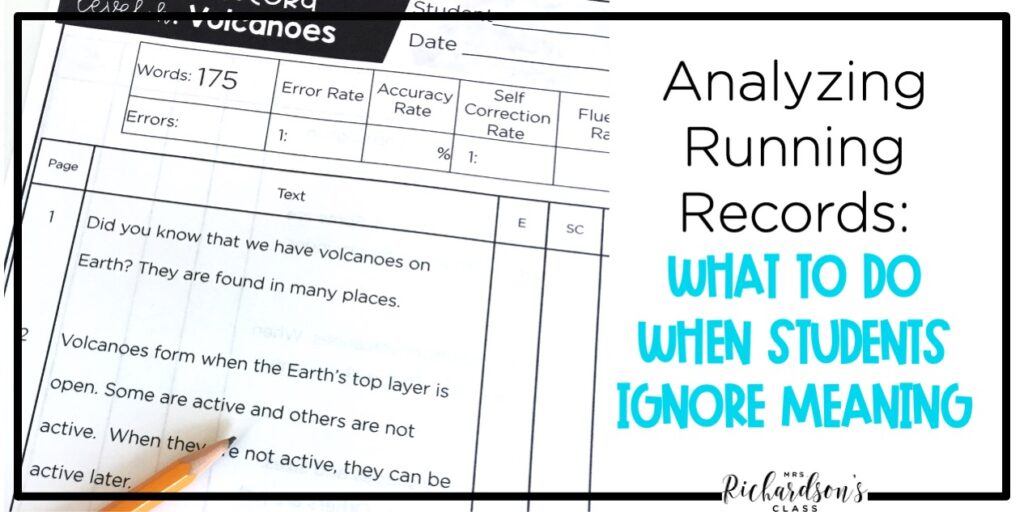
A student who is struggling with meaning is having difficulty with semantics. They struggle to make and use meaning when reading a word or text. They aren’t using what is happening in the story to help them decode unfamiliar words. A student who is struggling with using meaning might read a story about a cat but read the word “car” instead. This student would only be using syntax and visual cues to solve a word, but he would be ignoring meaning.
A student who is struggling with meaning is often not self-correcting or monitoring what they are reading. On running records, students may have more structural or visual errors than meaning errors because they are only using structural or visual cues to decode and are ignoring meaning. They don’t realize that the word they said does not make sense in the context of the story. With the youngest reader who has a lot of picture support, the word may not match the illustration.
When students don’t self-monitor their comprehension begins to break down. They don’t truly understand what is going on in the story because it doesn’t make sense to them. It’s important for students to self-correct so they are accurate readers who can comprehend while reading.
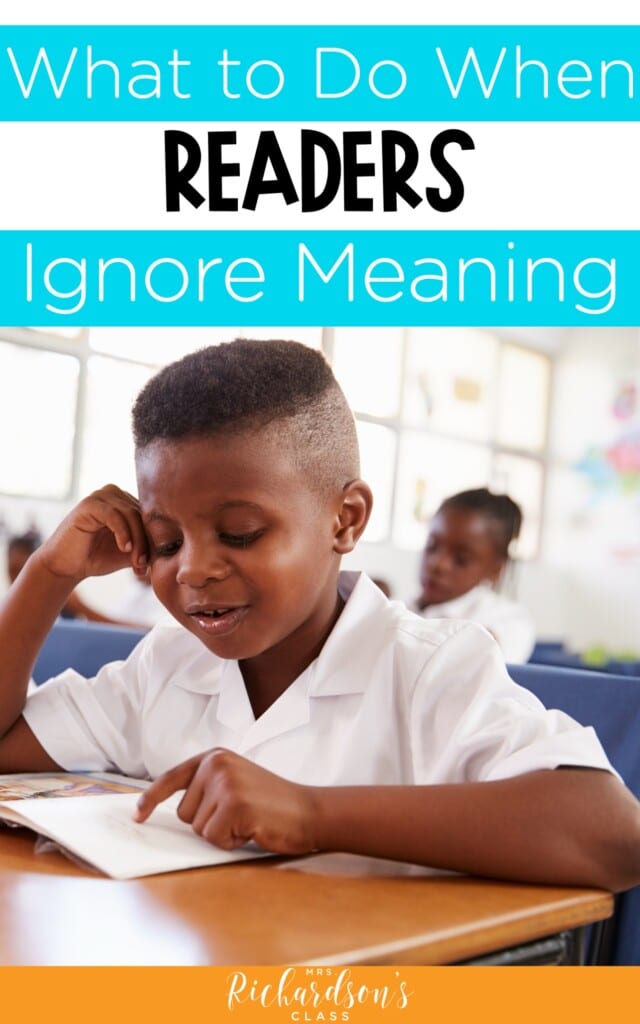
Diving into the MSV part of running records is where the magic can happen! When students are only making errors based on structure or visual cues, or their self-corrections are NOT based on meaning, you’ll know to have students start to work on integrating meaning in their reading.
You can find a few more tips on taking running records HERE.
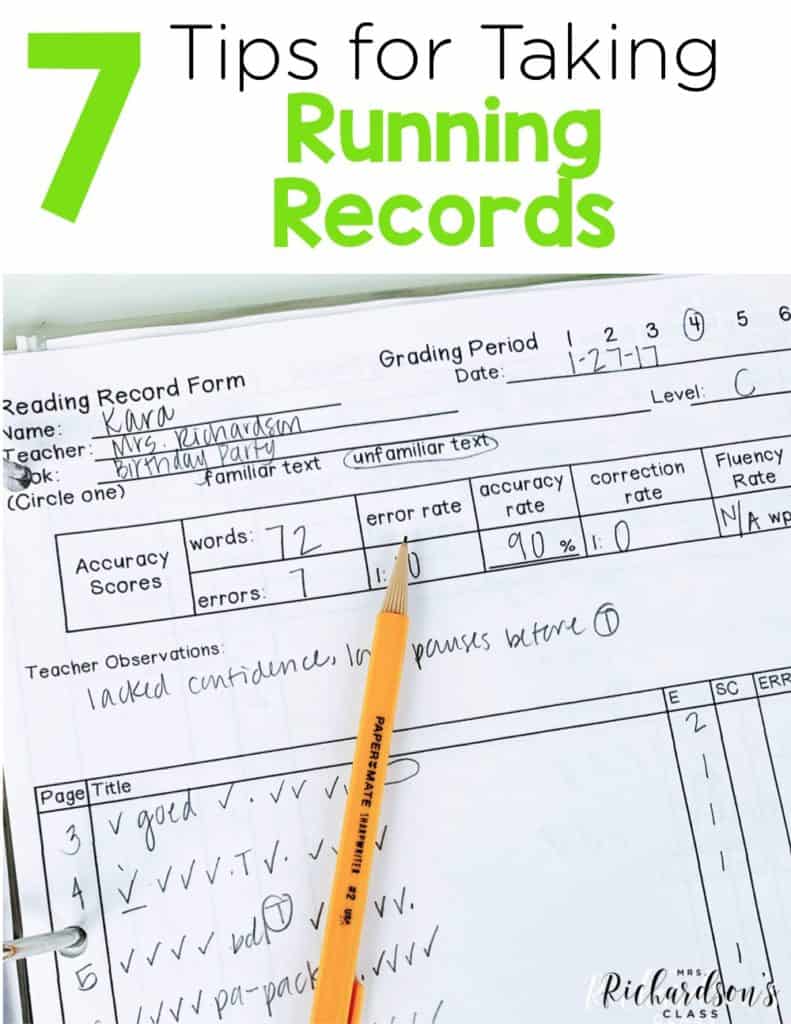
If you want more direct instruction on how to take and analyze running records to move students forward, my online course Rethinking Guided Reading might be just for you!
Join the waitlist and be the first to know when the doors are open.

Want to use the latest research to boost your readers during small groups? This FREE guide is packed with engaging ideas to help them grow!

I’m a K-1 teacher who is passionate about making lessons your students love and that are easy to implement for teachers. Helping teachers like you navigate their way through their literacy block brings me great joy. I am a lifelong learner who loves staying on top of current literacy learning and practices. Here, you’ll find the tools you need to move your K-2 students forward!


| Cookie | Duration | Description |
|---|---|---|
| cookielawinfo-checkbox-analytics | 11 months | This cookie is set by GDPR Cookie Consent plugin. The cookie is used to store the user consent for the cookies in the category "Analytics". |
| cookielawinfo-checkbox-functional | 11 months | The cookie is set by GDPR cookie consent to record the user consent for the cookies in the category "Functional". |
| cookielawinfo-checkbox-necessary | 11 months | This cookie is set by GDPR Cookie Consent plugin. The cookies is used to store the user consent for the cookies in the category "Necessary". |
| cookielawinfo-checkbox-others | 11 months | This cookie is set by GDPR Cookie Consent plugin. The cookie is used to store the user consent for the cookies in the category "Other. |
| cookielawinfo-checkbox-performance | 11 months | This cookie is set by GDPR Cookie Consent plugin. The cookie is used to store the user consent for the cookies in the category "Performance". |
| viewed_cookie_policy | 11 months | The cookie is set by the GDPR Cookie Consent plugin and is used to store whether or not user has consented to the use of cookies. It does not store any personal data. |
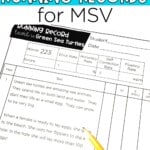
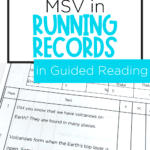

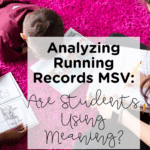
2 Responses
Please be aware of the pitfalls of the 3 cueing system; our children’s literacy depends on it.
https://www.breakingthecode.com/the-three-cueing-system-and-its-misuses/
https://www.breakingthecode.com/10-reasons-three-cueing-ineffective/
Thank you for sharing, Rachel!!